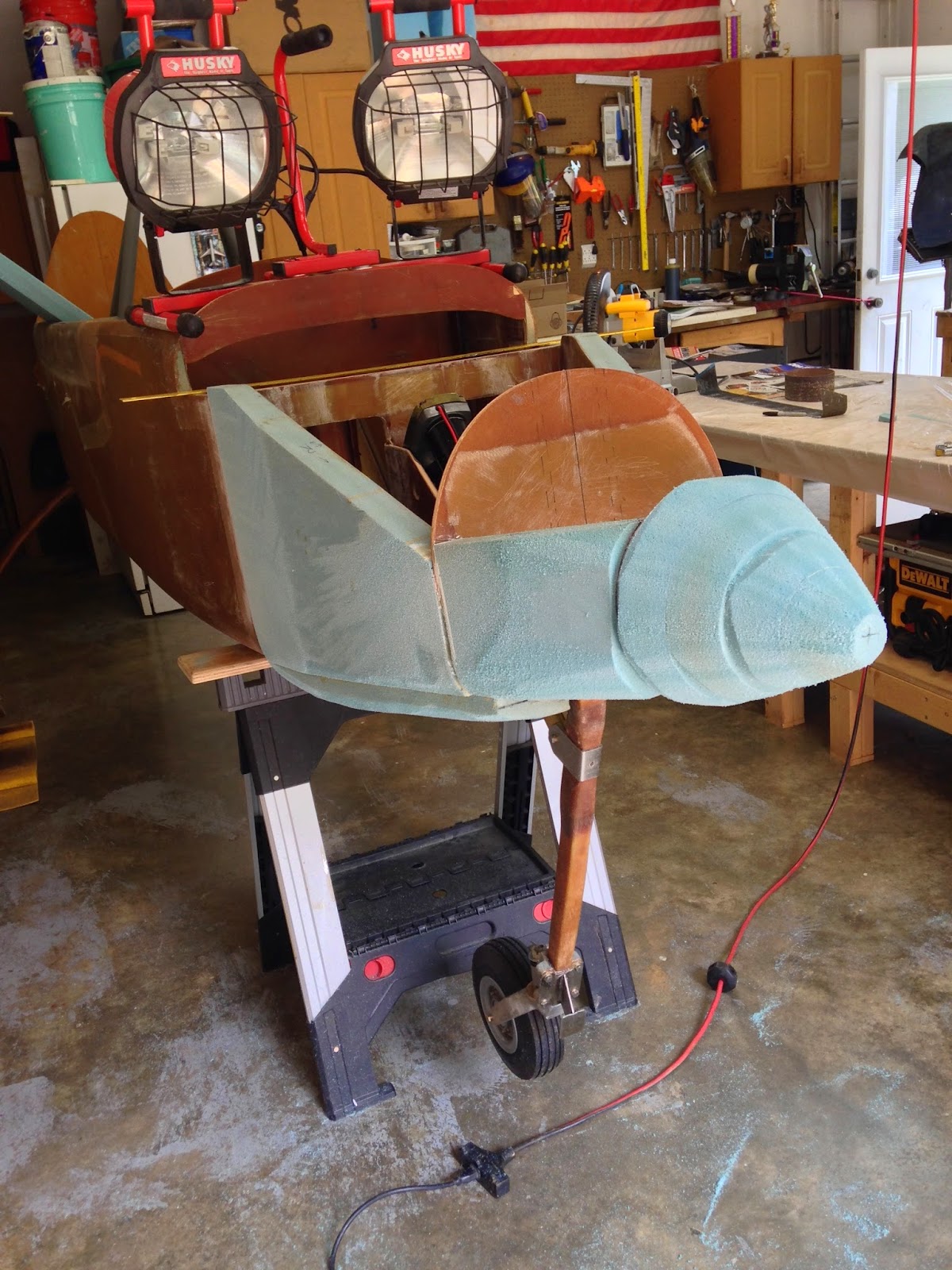Forward nose structure (7.8 hrs)
The longer nose needed a support framework, and this is where some of the pieces Wade and I glassed last month came into play.
 |
| "Look at those biceps!" |
After a few “dry runs” trying all kinds of devices to hold the little arms perpendicular to the bulkhead, I settle on two pieces I had made for the mill then discarded. These had exact 90˚ angles, good height, and small base to fit between the two arms I would be floxing.
 |
| Figuring things out before getting sticky |
I mixed some West System flox because it cures hard enough to handle in just a few hours, and attached the small brackets.
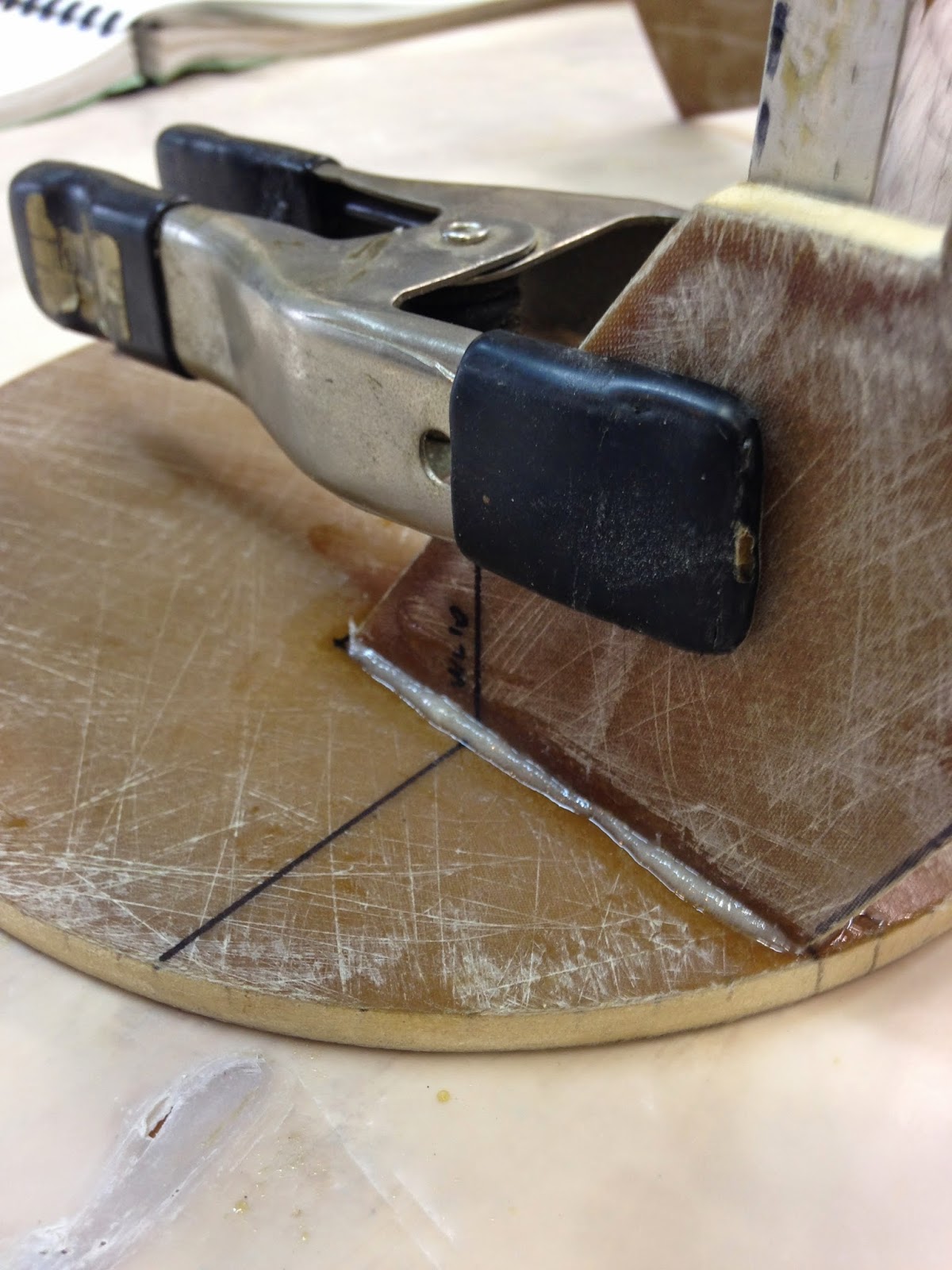 |
| West System flox |
While the flox cured in the very hot shop, I spent some time cutting BID tapes out of BID scraps I had been collecting for some time.
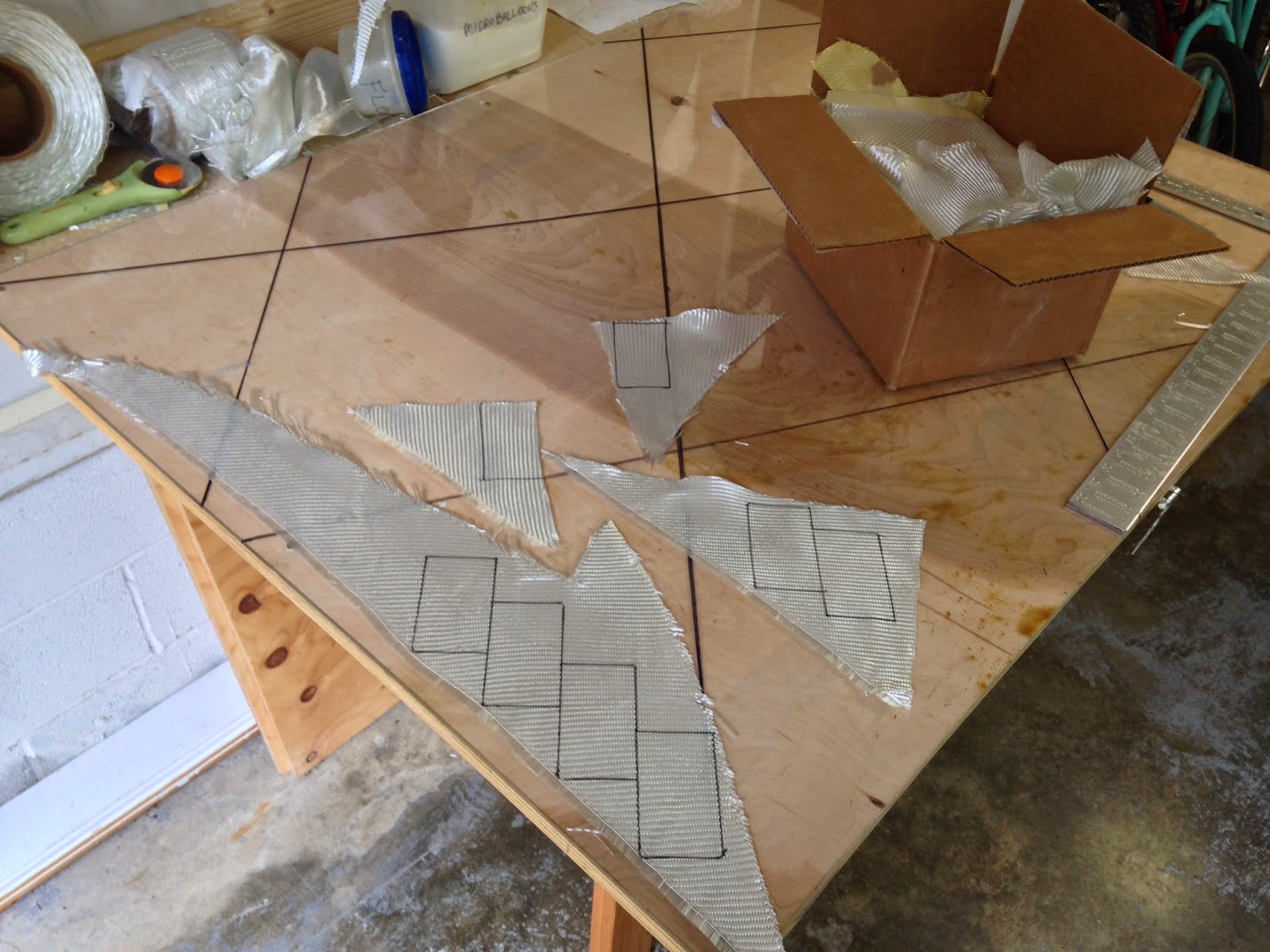 |
| Recycling |
Then it was the usual sequence... flox fillet, BID tape, and peel-ply.
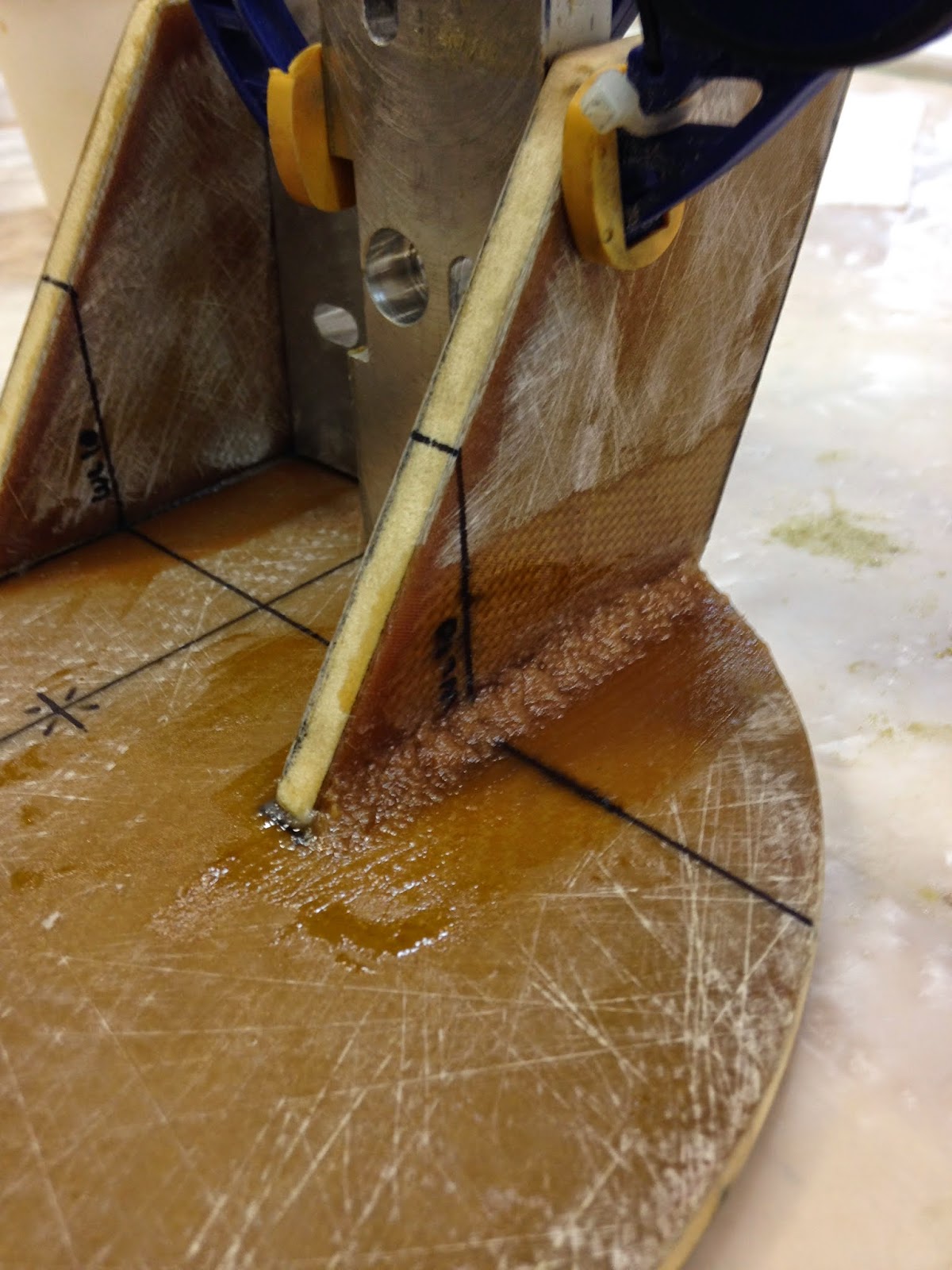 |
| Flox fillet |
 |
| BID tape |
 |
| Peel-ply |
The next morning I trimmed it, sanded it, and started to ponder how to proceed.
 |
| Forward nose structure |
 |
| Who's gonna hold this thing? |
After an hour of trying different things that didn’t work, and brainstorming with stray neighbors, I erected a small structure that, though flimsy, seemed to be able to keep things lined up in a repeatable fashion, and allowed me to check a few measurements using both hands.
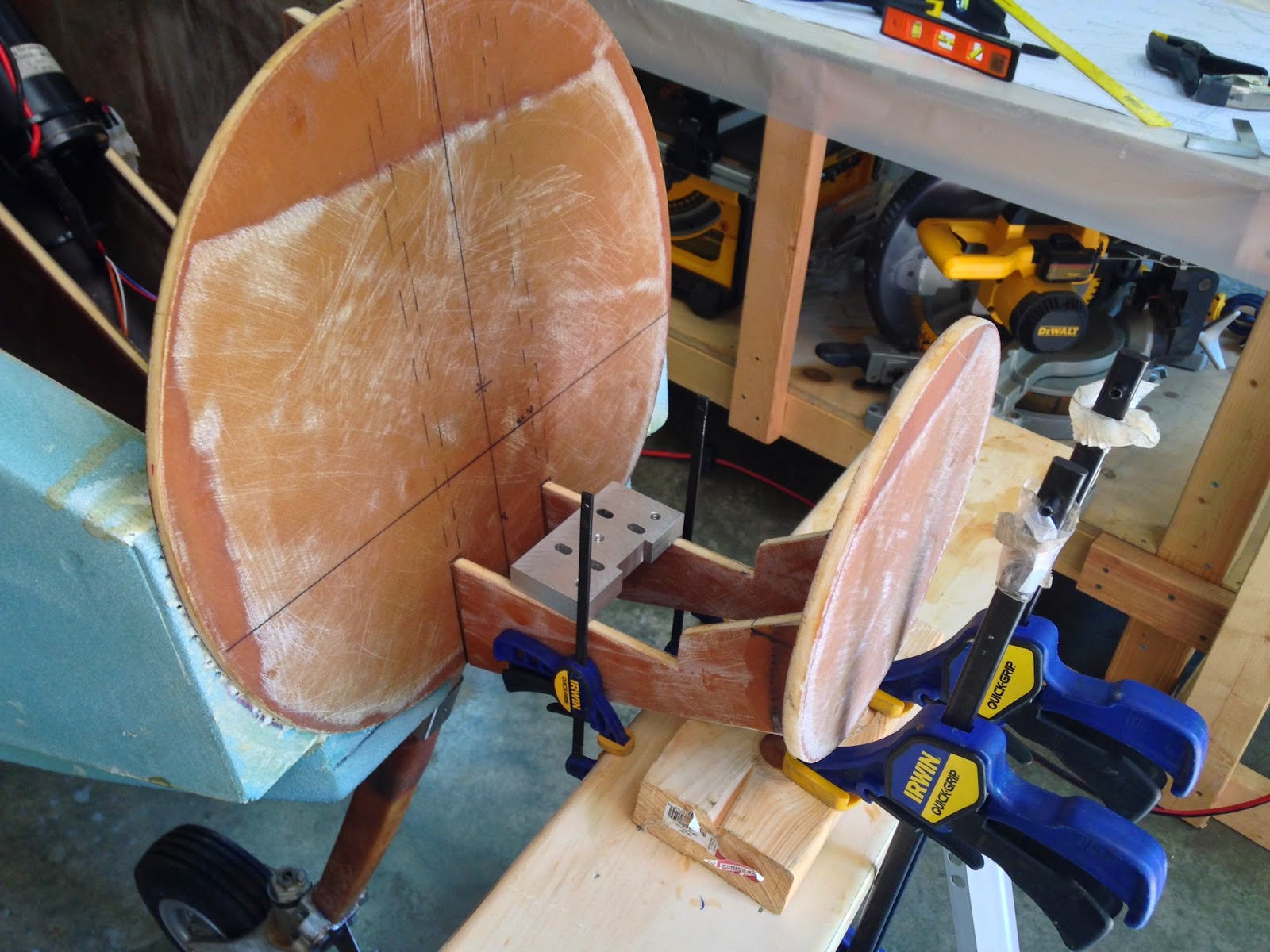 |
| For lack of a smarter solution... |
Because I didn’t trust this structure to stay put for very long, I decided to use “5 minutes epoxy”. Although I had never used it before, the package said it would set hard in 5 minutes, and achieve full cure in 24 hours. The 5 minute part is what I was after.
 |
| 5 minute epoxy |
So, I mixed equal parts of the stuff, put a generous amount on rear end of the brackets, and carefully laid it back into my contraption to harden. I also took this opportunity to prepare more BID tape, and I applied a flox fillet to the joint, followed by the tape, and peel-ply.
 |
| Flox fillet |
 |
| BID tape, and peel-ply. |
At this point, I thought I was done for the day. That is until I shone a laser on the fuselage centerline markings, and noticed that the one on the small nose bulkhead was off by more than 1/4” (6.4 mm) to the right (airplane left)!!!
I think I went through all 5 stages of grief in rapid succession, denial, anger, bargaining, depression, and acceptance.
With the 5 minute epoxy hardening fast, my options were rapidly disappearing. I could always “go nuclear” later, and do a complete tear down so, I tried applying a measured amount of sideways traction to the structure first, until I achieved the right amount of deflection.
This turned out to be quite a bit of force due to the need to counteract the fast setting 5 minute epoxy, so much so in-fact that I had to brace the fuselage to prevent it from slipping.
 |
| Straightening things out |
To ensure the angles would be locked in once and for all, I opted to apply the inner BID tape at this time as well.
 |
| More flox fillet action |
 |
| All taped up |
With all the centerline marks lined up, the overnight waiting game bagan.
 |
| Verifying all centerlines line up |
Will the marks be still lined up in the morning?
Will the nose structure remain straight after removing the elastic strap?
I am happy to report that the answer turned out to be a YES to both questions.
 |
| Cured and cleaned up |
To complete the structure I added BID tape to the last joint.
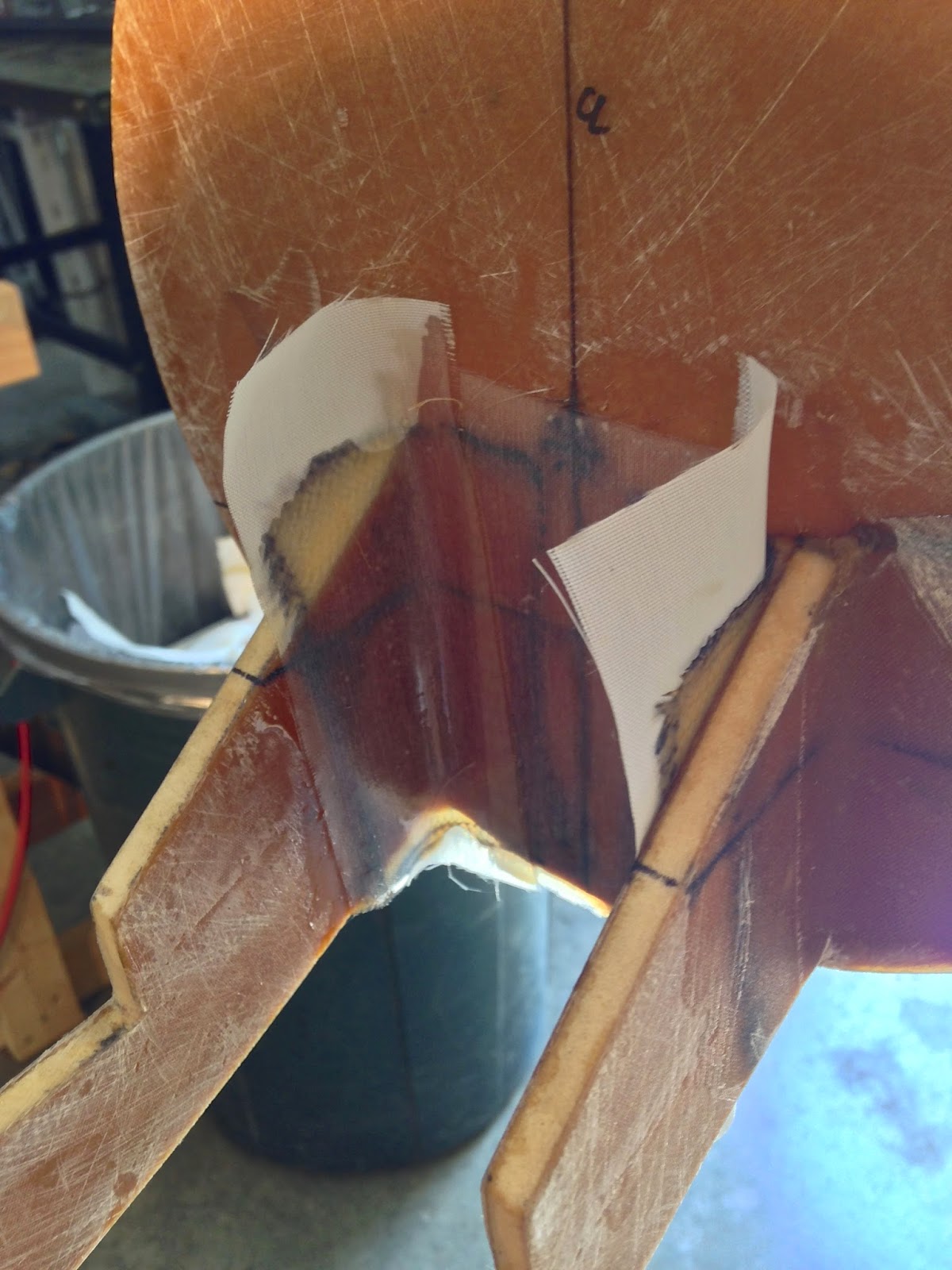 |
| Last joint to get the BID tape beauty treatment |
While I was at it, I decided to add the F-6 bulkhead, and finish up the NG-30 box structure.
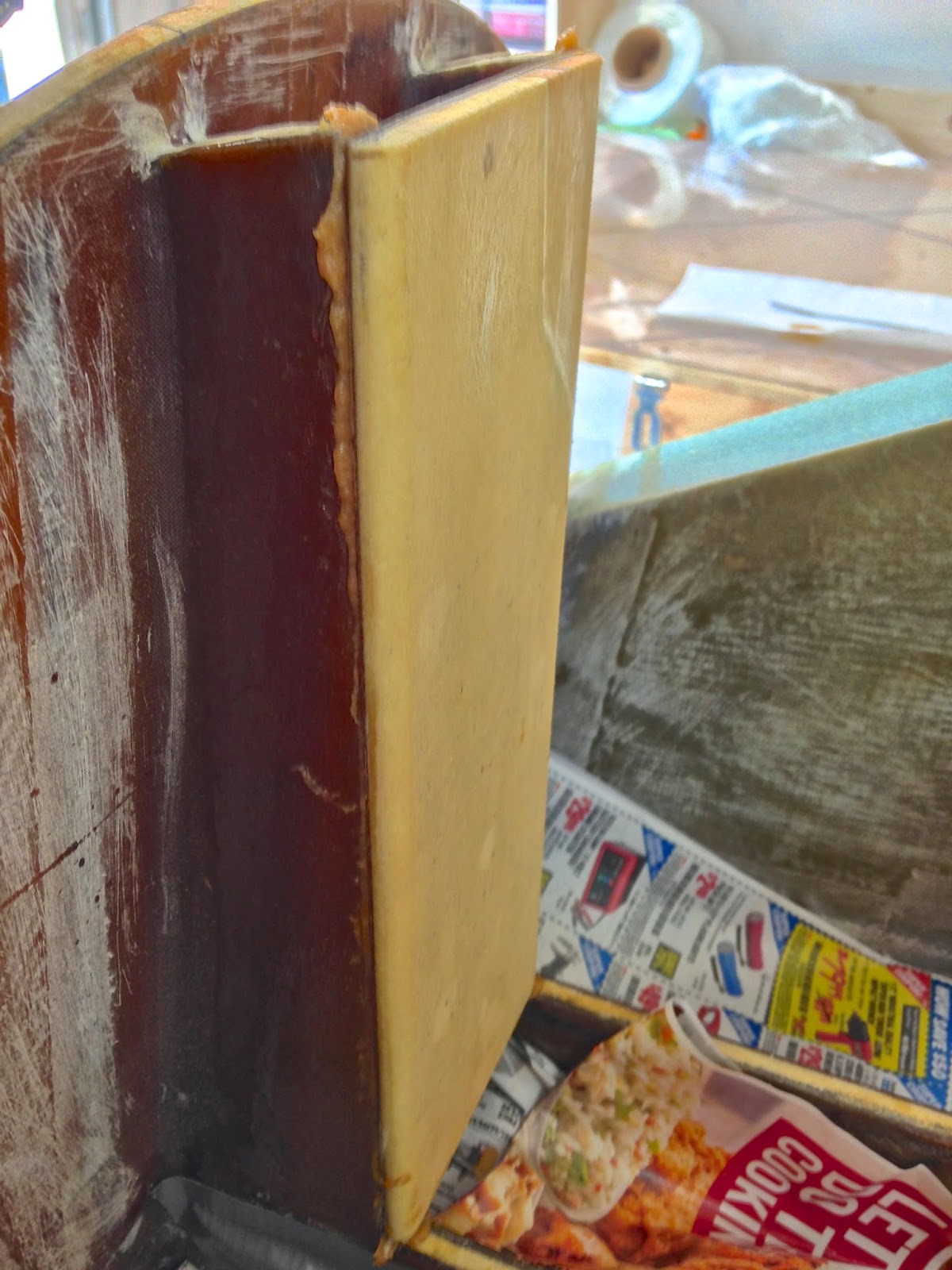 |
| F-6 floxed to NG-30 |
 |
| F-6 glassed... |
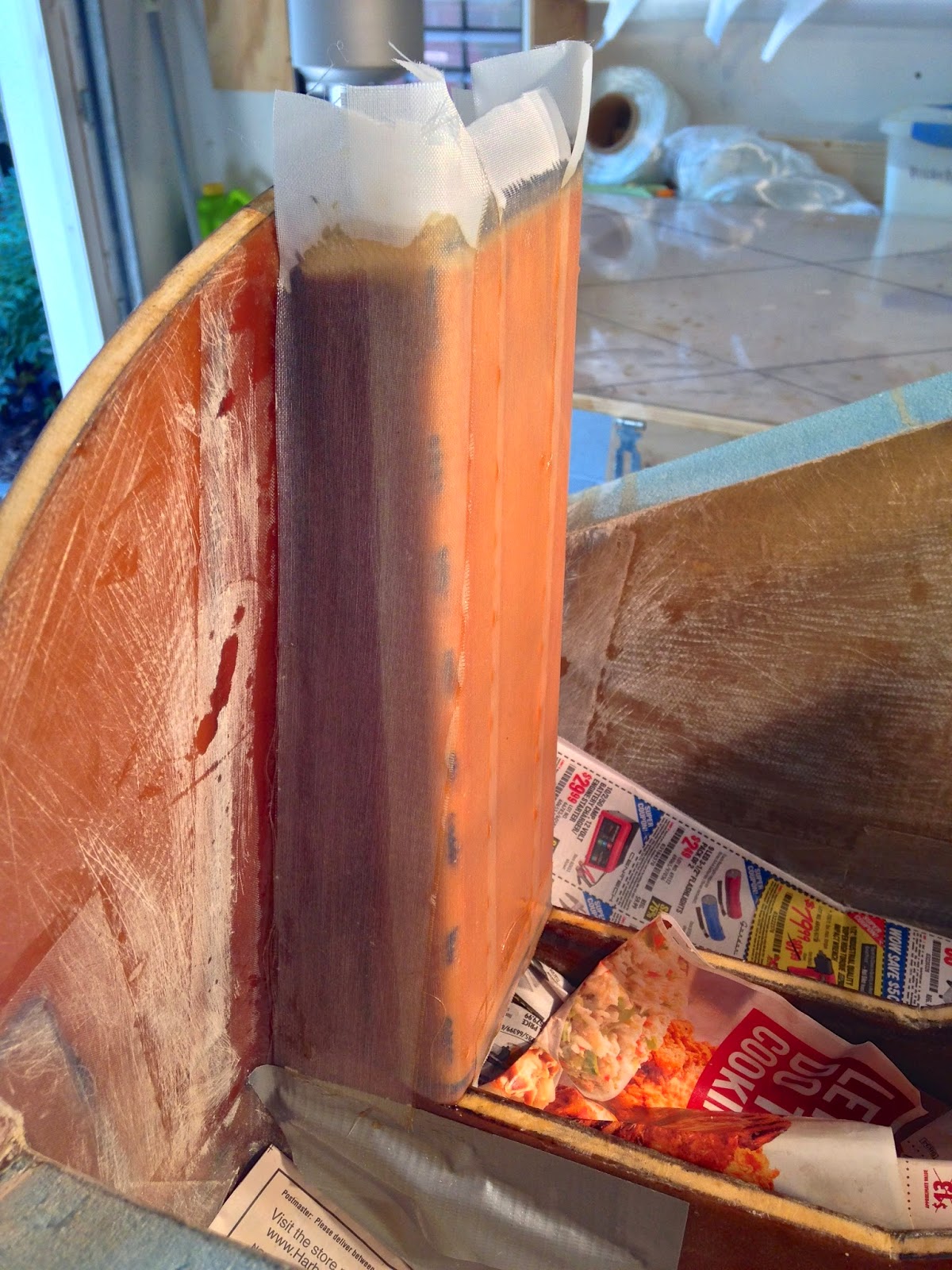 |
| ... and peel plied |







